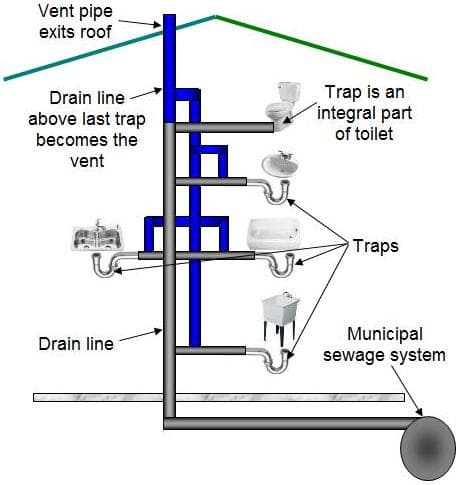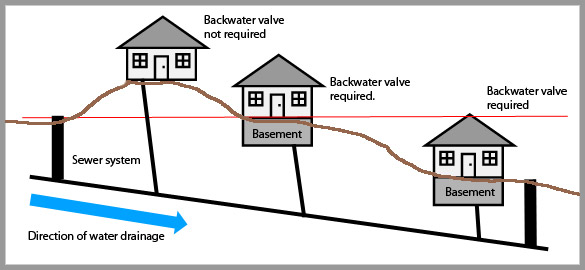Understanding The Structure of Your House's Plumbing System
Understanding The Structure of Your House's Plumbing System
Blog Article
We have encountered this post about Plumbing Installation 101: All You Need to Know directly below on the internet and accepted it made good sense to relate it with you in this article.

Understanding how your home's plumbing system works is essential for each property owner. From providing clean water for drinking, food preparation, and showering to safely eliminating wastewater, a well-maintained pipes system is crucial for your family members's health and comfort. In this detailed overview, we'll check out the detailed network that comprises your home's pipes and deal tips on upkeep, upgrades, and taking care of common issues.
Intro
Your home's pipes system is greater than simply a network of pipes; it's a complicated system that ensures you have access to tidy water and effective wastewater elimination. Recognizing its elements and just how they work together can assist you protect against expensive repair services and guarantee whatever runs smoothly.
Fundamental Components of a Plumbing System
Pipelines and Tubing
At the heart of your plumbing system are the pipelines and tubing that lug water throughout your home. These can be made of various products such as copper, PVC, or PEX, each with its advantages in terms of longevity and cost-effectiveness.
Components: Sinks, Toilets, Showers, and so on.
Components like sinks, commodes, showers, and bath tubs are where water is utilized in your home. Understanding just how these fixtures connect to the pipes system assists in diagnosing problems and intending upgrades.
Valves and Shut-off Factors
Shutoffs control the circulation of water in your plumbing system. Shut-off valves are important throughout emergency situations or when you need to make fixings, permitting you to isolate parts of the system without interfering with water circulation to the entire home.
Water System
Key Water Line
The major water line connects your home to the community water supply or a personal well. It's where water enters your home and is dispersed to different components.
Water Meter and Stress Regulator
The water meter steps your water usage, while a stress regulator guarantees that water flows at a secure stress throughout your home's plumbing system, avoiding damages to pipes and fixtures.
Cold Water vs. Warm water Lines
Understanding the difference between cold water lines, which supply water directly from the primary, and hot water lines, which bring heated water from the hot water heater, assists in troubleshooting and planning for upgrades.
Water drainage System
Drain Pipes and Traps
Drain pipelines lug wastewater far from sinks, showers, and bathrooms to the sewer or sewage-disposal tank. Traps protect against sewage system gases from entering your home and likewise trap particles that could create blockages.
Air flow Pipes
Ventilation pipelines allow air right into the drain system, protecting against suction that could reduce drain and trigger traps to empty. Proper air flow is vital for keeping the integrity of your pipes system.
Relevance of Proper Drain
Making certain proper drainage protects against backups and water damage. Regularly cleaning up drains and preserving catches can protect against pricey repairs and extend the life of your pipes system.
Water Heating Unit
Sorts Of Water Heaters
Hot water heater can be tankless or typical tank-style. Tankless heating units warmth water as needed, while containers keep warmed water for immediate use.
Just How Water Heaters Connect to the Pipes System
Recognizing exactly how hot water heater connect to both the cold water supply and hot water circulation lines helps in diagnosing problems like not enough warm water or leakages.
Maintenance Tips for Water Heaters
Frequently flushing your hot water heater to get rid of sediment, inspecting the temperature setups, and checking for leaks can extend its life expectancy and boost energy effectiveness.
Usual Plumbing Problems
Leakages and Their Reasons
Leakages can occur because of maturing pipes, loose fittings, or high water pressure. Addressing leakages promptly prevents water damage and mold and mildew development.
Blockages and Blockages
Blockages in drains and toilets are usually triggered by purging non-flushable products or a buildup of grease and hair. Making use of drain displays and being mindful of what goes down your drains can prevent obstructions.
Indications of Pipes Problems to Look For
Low tide stress, slow drains pipes, foul odors, or abnormally high water bills are signs of possible plumbing troubles that must be resolved without delay.
Pipes Maintenance Tips
Routine Inspections and Checks
Arrange yearly plumbing inspections to catch concerns early. Seek indicators of leakages, corrosion, or mineral accumulation in taps and showerheads.
DIY Maintenance Tasks
Basic tasks like cleaning faucet aerators, looking for toilet leakages using dye tablet computers, or insulating subjected pipes in cool climates can avoid significant pipes issues.
When to Call an Expert Plumber
Know when a pipes issue calls for expert expertise. Attempting complex repair services without appropriate understanding can bring about even more damage and higher repair service prices.
Upgrading Your Plumbing System
Reasons for Updating
Updating to water-efficient fixtures or replacing old pipes can boost water quality, decrease water bills, and boost the value of your home.
Modern Plumbing Technologies and Their Advantages
Discover technologies like wise leak detectors, water-saving bathrooms, and energy-efficient hot water heater that can save money and minimize ecological impact.
Cost Considerations and ROI
Compute the upfront expenses versus long-lasting cost savings when taking into consideration pipes upgrades. Several upgrades spend for themselves via decreased utility costs and fewer repair work.
Ecological Impact and Conservation
Water-Saving Fixtures and Home Appliances
Installing low-flow faucets, showerheads, and toilets can substantially decrease water usage without sacrificing efficiency.
Tips for Reducing Water Use
Straightforward practices like dealing with leakages immediately, taking shorter showers, and running full tons of laundry and recipes can preserve water and reduced your energy expenses.
Eco-Friendly Plumbing Options
Consider lasting pipes products like bamboo for floor covering, which is durable and environment-friendly, or recycled glass for counter tops.
Emergency situation Preparedness
Steps to Take Throughout a Pipes Emergency
Know where your shut-off shutoffs lie and just how to turn off the supply of water in case of a ruptured pipeline or major leak.
Value of Having Emergency Situation Contacts Helpful
Maintain call info for neighborhood plumbers or emergency situation solutions conveniently offered for fast action throughout a plumbing dilemma.
DIY Emergency Fixes (When Relevant).
Short-lived solutions like utilizing duct tape to patch a dripping pipe or placing a bucket under a trickling tap can reduce damage till an expert plumber shows up.
Verdict.
Understanding the composition of your home's pipes system equips you to keep it efficiently, conserving time and money on fixings. By following routine upkeep routines and remaining informed regarding modern-day plumbing innovations, you can ensure your plumbing system operates efficiently for several years to come.
Exploring Your Homes Plumbing Anatomy
Water Supply System
Main Water Line: This is where water enters your home from the municipal supply or a private well.
Water Meter: Typically located near where the main water line enters the property, it measures the amount of water used.
Shutoff Valve: It s crucial to know where this is in case of emergencies. It allows you to turn off the water supply to the entire house.
Pipes and Fittings: These distribute water throughout your home. Materials can include copper, PVC, or PEX.
Drain-Waste-Vent (DWV) System
Drains: Located in sinks, showers, and tubs, these carry wastewater away.
Traps: U-shaped pipes under sinks that hold standing water, blocking sewer gases from entering the home.
Vents: Pipes that lead from the DWV system to the outside, preventing vacuum formation and allowing gases to escape.
Sewer Line: Carries all wastewater from the home to the municipal sewer system or a septic tank.
Fixtures and Appliances
Sinks, Toilets, and Showers
Dishwashers and Washing Machines
Water Heaters
Maintenance Tips
Regularly check for leaks in exposed pipes and around fixtures.
Inspect the water heater annually for signs of wear.
Clean drains and traps to prevent clogs and odors.
Know how to shut off water to individual fixtures.
When to Call a Professional
Major leaks or burst pipes
Installation of new pipes or fixtures
Septic tank issues
Remodeling projects that involve plumbing changes
Conclusion
Understanding the anatomy of your home's plumbing is key to maintaining a functional and efficient system. Regular checks and knowing when to call in the experts can save you time, money, and stress.
https://www.mavyn.com/blog/exploring-your-homes-plumbing-anatomy

Exploring Your Homes Plumbing Anatomy
Water Supply System
Drain-Waste-Vent (DWV) System
Fixtures and Appliances
Maintenance Tips
When to Call a Professional
Conclusion
Understanding the anatomy of your home's plumbing is key to maintaining a functional and efficient system. Regular checks and knowing when to call in the experts can save you time, money, and stress.
https://www.mavyn.com/blog/exploring-your-homes-plumbing-anatomy
As an avid person who reads on Plumbing Installation 101: All You Need to Know, I figured sharing that piece was important. Don't hesitate to set aside a second to promote this blog post if you enjoyed reading it. Many thanks for taking the time to read it.
Call Us Now Report this page